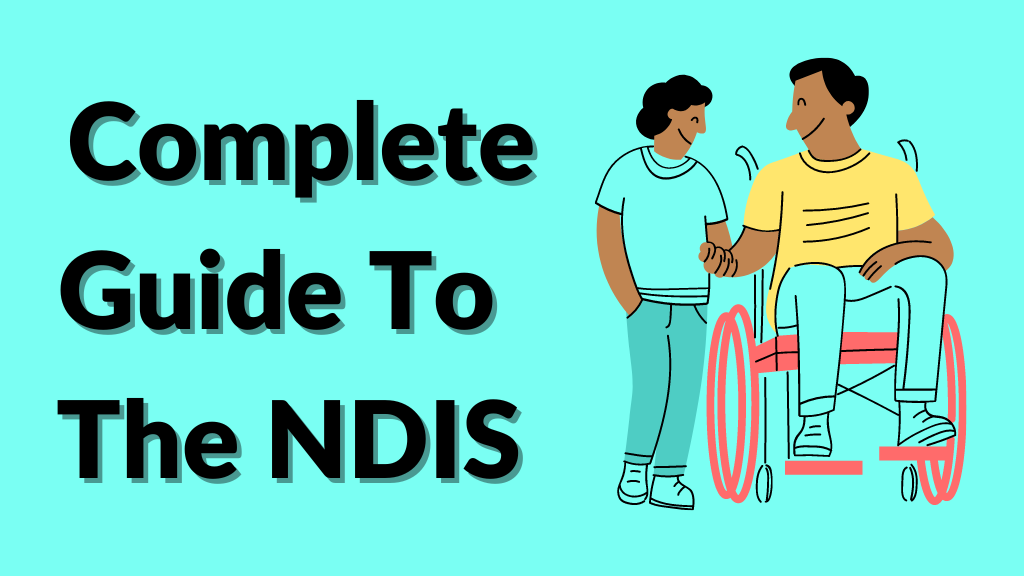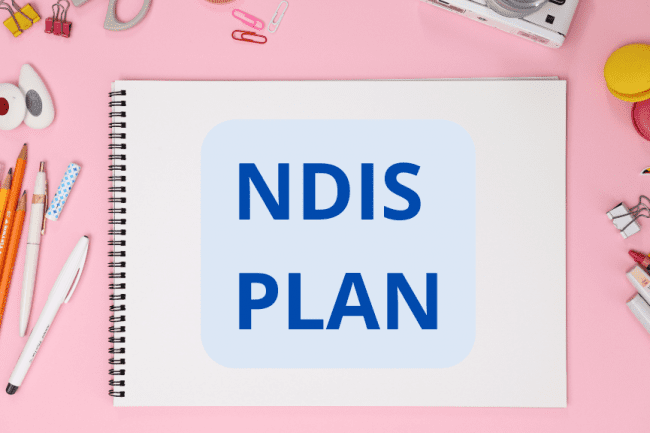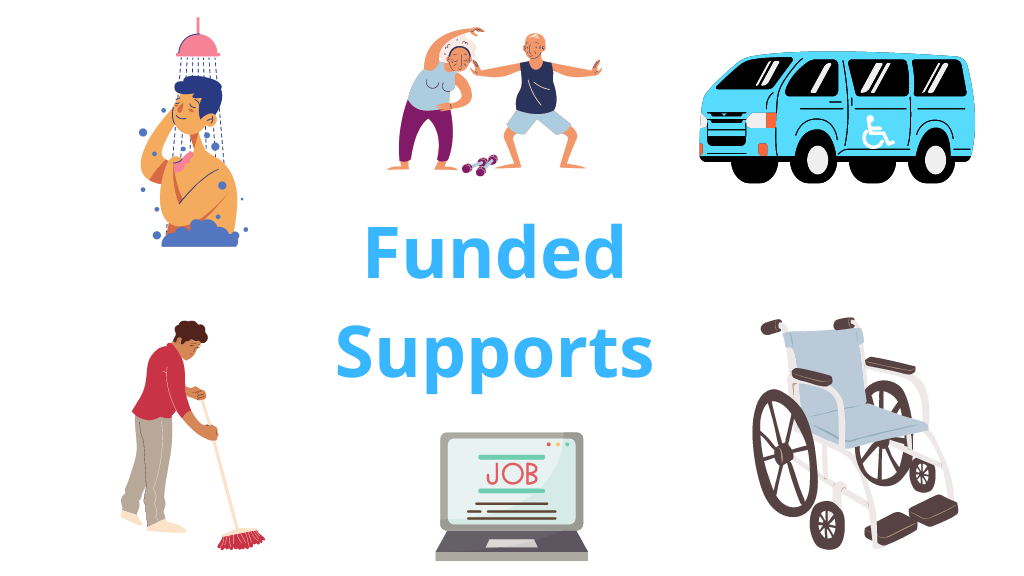How Does The NDIS Work? (Complete Guide)
12 September 2022
Share

The NDIS stands for National Disability Insurance Scheme. This initiative was created by the government in 2017 to help people living with a disability live a more meaningful and fulfilled life. So far, there are over 500,000 Australians with a disability being supported through this scheme.
We understand that the entire process can feel overwhelming, stressful and confusing, but by the end of this guide you will know exactly how to navigate the world of NDIS.
Today, we’ll explain in a simple way how the NDIS works and how you can make the most of it.
But, why should you listen to us?
We’ve been helping NDIS participants connect with the NDIS for over 5 years now. We’ve supported over 100 participants to gain the right support they need and helped take away all the stress and confusion in the process. It’s what we do.
We’ll start by briefly explaining what the NDIS is for those who are completely new. If you already know about the NDIS, click here to skip to the next section.
Table of Contents
What Is The NDIS?
So, we know that the NDIS was created by the government to support people living with a disability, but how exactly do they do this?
Primarily through funding and connecting participants to services within their community.
The NDIS provides eligible participants with money that can be used to access supports in their daily life. Now, there is a limit to how much funding is provided as well as limitations on how participants are actually about to spend their funding, but we will discuss this in a later section.
The goal of this funding is to make your life easier and more enjoyable. It’s to provide you with more time to enjoy with family and friends, to learn new skills, access new jobs, connect with your community and live a more independent lifestyle.
Am I Eligible?
If you are an individual with a disability and you are looking for support, this is where you need to begin. This is step 1.
There is an eligibility checklist that needs to be met in order for you to qualify for support from the NDIS. Let’s have a look at it:
- Age requirement: You must be between 7-65 to qualify. If you do not fit within this age bracket, there may be other types of support you can qualify for.
- Residency requirements: You must be an Australian Citizen, permanent resident or a Protected Special Category Visa Holder.
- Disability requirements: You must be living with a disability caused by a permanent impairment.
- Early intervention requirements: You may be eligible for support in the present moment if it will reduce your need for support in the future.
Once you have completed this checklist and see that you qualify for support from the NDIS, the next step is to simply apply for a NDIS plan.
Before we discuss the application process, let’s talk about what a NDIS plan actually is.
What Is A NDIS Plan?

Your NDIS plan outlines 3 primary sections:
- A list of the short, medium or long-term goals you want to achieve
- A list of the reasonable and necessary supports you need to help you achieve these goals
- The funding you require to access supports and reach your goal
Let’s look at a simple example:
Goal: John wants to learn how to look for work and apply for jobs
Support: In order to reach this goal, John’s Local Area Coordinator (LAC) will support him to connect to a service that can help him develop his job searching skills
Funding: A certain amount of money will be used from John’s funding to pay for this service
You will also see a few other sections within your NDIS plan including:
- An overview of who you are
- A breakdown of your budgets for different supports
- Information on who you can contact for support
It’s important to note that your NDIS plan will change as you and your goals change. Over time, your life will be different and you will require and up-to-date plan to reflect these changes.
Now that we know what a plan is, let’s discuss how you can apply for a NDIS plan today.
How To Apply for A NDIS Plan?
Applying for a NDIS plan does not need to be complicated. There are a few ways you can apply:
- Apply over the phone by calling 1800 800 110
- Complete an Access Request Form
If you’re stuck or need some help with applying, you can always contact the NDIA office.
Alternatively, if you would like extra support with your NDIS application, you can contact us and we will be happy to walk you through the application process.
Tip: when applying, make sure you have the following pieces of evidence prepared:
- Evidence of your age
- Evidence that you are an Australian Citizen or permanent residence
- Evidence that you live in Australia permanently
- Evidence of your disability
The NDIA will check that you have provided everything and they will contact you if something is missing. It may take up to 21 days to receive a response from the NDIA regarding your eligibility.
If your application is successful, the next step is to create your NDIS plan.
Creating Your NDIS Plan
In order to create your NDIS plan, you need to attend a planning meeting either in person or over the phone. You are able to bring a family member or anyone else with you to the meeting.
The planning meeting is a meeting between you and the NDIA to help them figure out how to develop a plan that provides you with the right kind of support you need.
During this meeting, they will be asking you questions to explore how you are doing in the different areas of your life.
Questions will be based on the following topics:
- Your personal details
- The goals you want to achieve
- The supports you require to use your NDIS plan
- The way you manage your daily activities
- Your community and mainstream supports
Once your plan is approved, you will receive it either in person or in the mail, and through the ‘my place portal.’
How To Use Your NDIS Plan
Okay, so you have your plan and you’re ready to make use of your funding and gain support… but how do you do this?
First things first. You need to understand how to actually manage your plan so that you can get the most out of it.
You have 4 options when choosing to manage your plan:
1. Self-management
- With self-management, you are choosing to manage your NDIS funding yourself. You have the choice to decide how you want to spend your funding and what supports you want to buy to help you meet your goals.
- It’s important to note that self-managing your plan comes with additional responsibility. As a self-manager, you must make clear agreements with the providers you choose, claim and pay for the supports as well as keep invoices and receipts to use as evidence of your purchases. These are just some of the responsibilities you will be required to maintain.
2. Plan management
- A plan manager (NDIS provider) will support you by managing the funds in your NDIS plan and help you to access supports. They will help pay providers, help you increase your financial skills and advise you when your NDIS funds are low.
3. Agency management
- This is where your plan is managed by the NDIA and they pay your providers on your behalf.
3. A combination of the three options above
- You may choose to self-manage one part of your plan whilst having the rest managed by the NDIA.
Types of supports that are funded

Now that you know how to manage your plan, you must be wondering ‘does the NDIS fund…’. Well, the NDIS does not mention specific items or services that you can use your funding for, but they do emphasise that as long as your funding is going towards relevant support for your disability, then it will be acceptable.
Here at Hikma House, we like to make things as simple as possible. So we’ve put together a list of supports that may be funded by the NDIS:
- Daily personal activities
- Community participation
- Supported accommodation such as short term accommodation, medium term accommodation, supported independent living and specialist disability accommodation.
- Transport to provide access and connection to the community, social, economic and daily life activities
- Support in the workplace to help you gain or keep employment
- Therapeutic supports including behaviour support
- Assistance with daily living such as household tasks
- Support by skilled personnel in aids or equipment assessment, set up and training
- Home modification
- Mobility equipment
- Vehicle modifications
Types of supports that are not funded
Similarly, you might also be thinking: “Well, what does the NDIS not fund?”
Here is a list of supports the NDIS specifically states they do not fund:
- Supports that are not their responsibility but rather the responsibility of another government system or community service
- Supports that have nothing to do with an individuals disability
- Day-to-day living costs that are not related to a participants support needs
- Anything that is likely to cause harm to the participant or pose a threat to the livelihood of others.
We hope this blog post has really helped clear up some of the confusion of this process. If you would still like some help to make the process as smooth as possible, contact us today.
